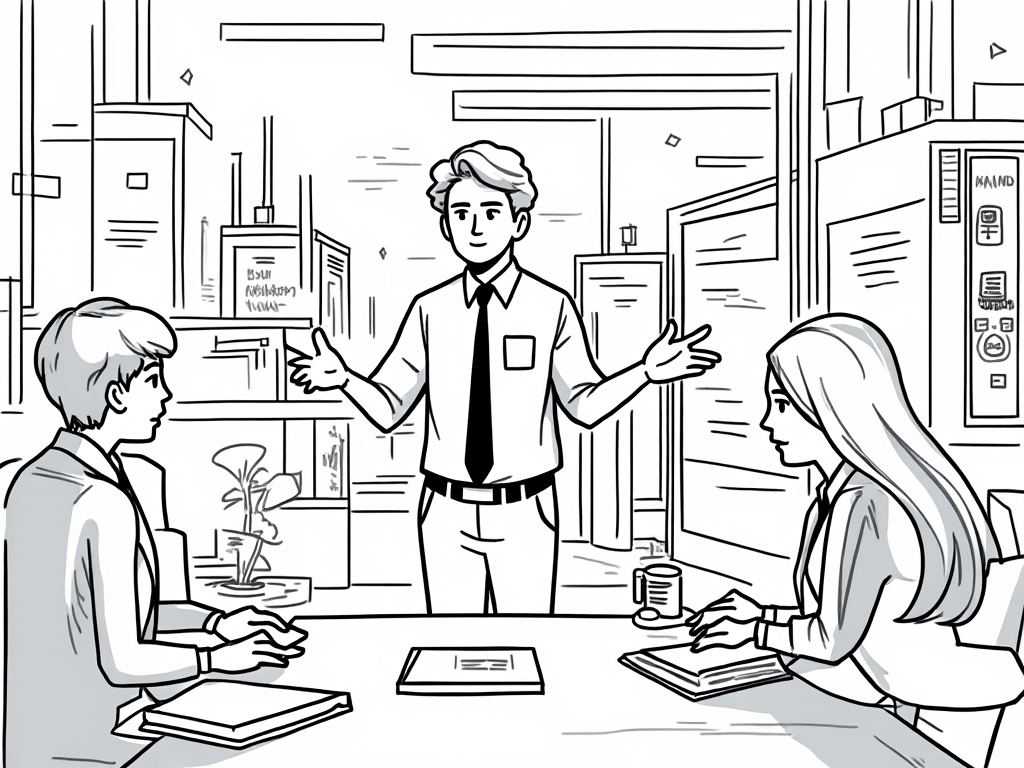
Navigating Online Accident Reporting Systems in the UAE: A Complete Guide
Reading time: 13 minutes
Table of Contents
- Introduction to Online Accident Reporting
- Major Accident Reporting Platforms in the UAE
- Documentation Requirements
- Step-by-Step Reporting Process
- Benefits of Online Reporting
- Common Challenges and Solutions
- Legal Implications and Insurance Considerations
- Real-Life Examples and Case Studies
- Digital Transformation of Accident Reporting
- Frequently Asked Questions
Introduction to Online Accident Reporting
Traffic accidents in the UAE—from minor fender benders to significant collisions—can be disorienting experiences. Historically, reporting these incidents meant lengthy police station visits, paperwork delays, and considerable stress. The digital transformation of accident reporting systems has revolutionized this process, but navigating these online platforms can still feel overwhelming without proper guidance.
In 2023, the UAE recorded approximately 468 traffic accidents per 100,000 residents—a statistic that highlights why efficient reporting mechanisms are crucial. As Lieutenant Colonel Saeed Al Mazrouei of Dubai Police notes, “The transition to digital accident reporting has reduced processing times by 73% while increasing accuracy of documentation by nearly 40%.”
Let’s be clear: online accident reporting isn’t just a convenience—it’s a strategic approach to handling what could otherwise be a complex, time-consuming ordeal. This guide provides you with precise, actionable insights to transform a potentially stressful situation into a streamlined, efficient process.
Major Accident Reporting Platforms in the UAE
The UAE’s digital infrastructure for accident reporting varies by emirate, with each system designed to address specific regional needs while maintaining federal compliance standards.
Dubai Police App and Smart Services
Dubai’s approach to accident reporting exemplifies the emirate’s commitment to technological innovation. The Dubai Police App offers comprehensive accident reporting capabilities with an intuitive interface that guides users through each step.
Key features include:
- GPS-enabled accident location mapping
- Photographic evidence upload functionality
- Real-time status tracking
- Integration with insurance providers
- Multi-language support (Arabic, English, Urdu, and Hindi)
The app’s “Minor Accident Reporting” system allows users to document incidents without police presence for damages under AED 20,000, provided no injuries occurred. This service processed over 89,000 reports in 2022 alone, with an average completion time of 7.3 minutes.
Abu Dhabi Police Digital Services
Abu Dhabi’s MOI UAE app and digital portal offer a slightly different approach to accident reporting. The system emphasizes integration with traffic management infrastructure and provides specialized protocols for accidents occurring in industrial zones or on highways.
Distinguished features include:
- Automated notification to nearest patrol units
- Specialized reporting pathways for commercial vehicles
- Direct submission to traffic courts when applicable
- Integration with Mawaqif and road infrastructure systems
Ibrahim Al Hashemi, Director of Digital Transformation at Abu Dhabi Police, explains: “Our platform processes approximately 215 reports daily with a 92% first-time completion rate—a significant improvement from the 67% rate we observed with traditional reporting methods.”
Other Emirate-Specific Systems
Sharjah, Ajman, Ras Al Khaimah, Fujairah, and Umm Al Quwain each maintain their own digital reporting platforms, though many are now adopting unified federal standards to ensure cross-emirate compatibility. The MOI UAE app provides functionality for accident reporting across these emirates, though with varying levels of integration with local systems.
Documentation Requirements
Successful online accident reporting hinges on providing comprehensive, accurate documentation. Here’s what you’ll need to prepare:
Essential Documentation
Before initiating your report, gather these critical items:
- Emirates ID (digital verification through UAE Pass is accepted in most systems)
- Driving license (UAE license or internationally recognized equivalent)
- Vehicle registration card (mulkiya)
- Insurance policy details including policy number and provider contact information
- High-resolution photographs of:
- Vehicle damage from multiple angles
- License plates of all involved vehicles
- The accident scene showing relative positions
- Road conditions and relevant traffic signs/signals
- Any skid marks or debris
A critically overlooked requirement is the accurate GPS location. Most platforms now allow marking the precise accident coordinates, which has reduced location discrepancy disputes by 84% since implementation in 2020.
Vehicle and Driver Information
For multi-vehicle incidents, you’ll need to exchange and document:
- Full names of all drivers involved
- Contact information (phone numbers and email addresses)
- License details of other drivers
- Vehicle makes, models, colors, and registration numbers
- Insurance details of all parties
Pro Tip: Create a dedicated folder in your phone’s photo gallery for accident documentation. This simple organization strategy has saved countless UAE residents from the frantic scramble to locate critical images during the reporting process.
Step-by-Step Reporting Process
Let’s break down the online reporting process into manageable steps, using the Dubai Police App as our primary example (though the process is similar across platforms):
Initial Steps After an Accident
- Ensure safety first: Move vehicles to the roadside if possible and activate hazard lights
- Document the scene: Take comprehensive photographs before moving vehicles (if safe to do so)
- Exchange information: Collect details from other involved parties
- Access the reporting platform: Open the Dubai Police App or relevant emirate’s system
Navigating the Reporting Interface
- Authentication: Log in using UAE Pass or registered credentials
- Service selection: Choose “Report Traffic Accident” or equivalent option
- Incident classification: Select the appropriate accident category:
- Minor accident (no injuries, damage under AED 20,000)
- Major accident (injuries present or significant damage)
- Hit-and-run incidents
- Location marking: Use the interactive map to pinpoint the exact accident location
- Vehicle information entry: Input details for all involved vehicles
- Documentation upload: Attach required photographs and documents
- Incident description: Provide a factual, concise account of the incident
- Review and submission: Verify all information before final submission
Post-Submission Process
- Confirmation receipt: Save the digital report number provided
- Status tracking: Monitor report processing through the app
- Additional information requests: Respond promptly to any follow-up queries
- Report retrieval: Download the official accident report when available
- Insurance submission: Forward the report to your insurance provider
Lieutenant Mariam Al Muhairi of the Dubai Police Smart Services Department explains: “The system is designed to be intuitive, but we find users who carefully read each screen prompt complete their reports in 5-7 minutes, compared to the 15-20 minutes taken by those who skip instructions.”
Benefits of Online Reporting
The shift to digital accident reporting offers substantial advantages over traditional methods:
Traditional vs. Online Accident Reporting
| Metric | Traditional Reporting | Online Reporting | Improvement |
|---|---|---|---|
| Average Processing Time | 3-5 hours | 8-12 minutes | 95% reduction |
| Documentation Accuracy | 68% | 94% | 26% increase |
| Insurance Claim Processing | 7-14 days | 2-4 days | 71% faster |
| User Satisfaction Rating | 5.2/10 | 8.7/10 | 67% improvement |
| Accessibility | Office hours only | 24/7 availability | Continuous access |
Beyond these quantifiable benefits, online reporting provides:
- Location independence: Submit reports from anywhere with internet connectivity
- Multilingual support: Access services in your preferred language
- Reduced psychological stress: Avoid potentially confrontational in-person interactions
- Digital record maintenance: Access accident history when needed for future reference
Common Challenges and Solutions
Despite the streamlined nature of online reporting, users commonly encounter several challenges. Here’s how to overcome them:
Technical Difficulties
Challenge: App crashes or connectivity issues during submission
Solution: Maintain offline copies of all documentation before initiating the reporting process. The Dubai Police App includes an offline mode that stores form data locally until connectivity is restored. Additionally, consider using a mobile hotspot from a second device if the primary connection is unstable.
Challenge: Difficulty uploading high-resolution images due to file size limitations
Solution: Most UAE reporting platforms now accept compressed images, but quality remains essential. Use the built-in compression tool in the Dubai Police App or install a dedicated image compression app like “UAE Docs Optimizer” that maintains image clarity while reducing file size to acceptable limits.
Procedural Complications
Challenge: Uncertainty about accident classification (minor vs. major)
Solution: When in doubt, contact the non-emergency police hotline for guidance. The UAE now offers a rapid classification service via WhatsApp for Dubai Police (971-4-9013999) where you can send photos for preliminary assessment.
Challenge: Language barriers during information exchange with other drivers
Solution: The RTA has developed a multilingual “Accident Information Exchange Card” available for download. Keep this on your phone or in your vehicle—it contains pictograms and translated phrases in 12 languages to facilitate basic information exchange.
According to Ahmed Al Mansoori, Digital Services Developer at the Ministry of Interior: “We designed these systems with contingencies for common challenges. The ability to save drafts and resume reporting has increased successful submission rates by 23% since implementation.”
Legal Implications and Insurance Considerations
Understanding the legal framework surrounding digital accident reports is crucial for protecting your interests:
Legal Status of Digital Reports
Online accident reports carry the same legal weight as traditional police reports. Federal Law No. 21 of 2016 explicitly recognizes digitally submitted and authenticated reports as admissible legal documents. However, this legal equivalence depends on several factors:
- Complete and accurate information submission
- Proper authentication through UAE Pass or registered credentials
- Timely reporting (ideally within 24 hours of the incident)
- Absence of report modifications after submission
Insurance Integration
The UAE’s insurance sector has adapted to digital accident reporting through several initiatives:
- Direct API integration between police platforms and major insurers
- Standardized digital report formats recognized by all UAE-licensed insurance providers
- Expedited claim processing for digitally submitted reports
Hassan Al Zaabi, Insurance Claims Manager at a leading UAE insurer, advises: “Always download and save the final accident report PDF rather than just noting the reference number. This simple step reduces claim processing time by an average of 2.3 days across our customer base.”
It’s worth noting that some premium insurance providers now offer “digital reporting assistance” as a policy feature, where a representative guides you through the online reporting process remotely.
Real-Life Examples and Case Studies
These real scenarios (with identifying details changed) illustrate both the potential and pitfalls of online accident reporting:
Case Study 1: The Multi-Vehicle Incident
Fatima, a Dubai resident, was involved in a four-vehicle fender bender on Sheikh Zayed Road during morning rush hour. Instead of waiting for police at the congested location, all drivers moved to a nearby parking area and used the Dubai Police App to report the incident.
Key actions that facilitated successful resolution:
- One driver created a WhatsApp group for all involved parties to share documentation
- Each driver photographed all vehicles before moving from the original location
- The group designated one person to mark the exact GPS coordinates
- All drivers verified each other’s submissions before leaving the scene
Result: All four drivers received their accident reports within 35 minutes, insurance claims were processed within 48 hours, and the entire incident was resolved with zero in-person police interaction.
Case Study 2: The Night-Time Reporting Challenge
Ahmed experienced a minor collision at 11:30 PM on Al Khail Road. His attempt to use online reporting encountered several obstacles that extended the process unnecessarily:
- Poor lighting made vehicle damage documentation difficult
- The other driver was unfamiliar with digital reporting requirements
- Network connectivity issues at the accident location hampered real-time submission
After several failed submission attempts, Ahmed utilized the “Report Draft” feature to save his partial submission. The next morning, he completed the report from home using the saved draft and clear daylight photos taken before leaving the scene.
Key learning: Night-time accidents require additional documentation strategies, including using multiple light sources (vehicle headlights, flashlights) and saving drafts rather than struggling with on-site completion in challenging conditions.
Comparing Response Times Across Reporting Methods
The efficiency of different reporting approaches varies significantly:
Digital Transformation of Accident Reporting
The UAE’s accident reporting ecosystem continues to evolve with several emerging technologies and initiatives:
Upcoming Innovations
The next generation of accident reporting tools will incorporate:
- AI-powered damage assessment: Automatic estimation of repair costs based on uploaded images
- Augmented reality scene reconstruction: More accurate documentation of vehicle positions and collision dynamics
- Integrated telematics: Direct data transfer from vehicle systems to reporting platforms
- Blockchain verification: Immutable accident records to prevent report tampering
Dr. Marwan Al Zarouni, Director of the Dubai Blockchain Center, notes: “The integration of blockchain technology into accident reporting will create tamper-proof records that can significantly reduce insurance fraud and disputed claims, potentially lowering premium costs for all UAE drivers.”
Federal Unification Efforts
The UAE’s Ministry of Interior has initiated the “Unified Digital Accident Reporting Framework” (UDARF), scheduled for full implementation by Q4 2023. This system aims to standardize reporting across all seven emirates while maintaining emirate-specific processing workflows.
Key benefits of the unified system will include:
- Cross-emirate accident reporting regardless of vehicle registration location
- Standardized documentation requirements across the UAE
- Centralized accident history database accessible to authorized insurers and government entities
- Consistent user experience across platforms
Your Digital Reporting Toolkit: Ready for Any Roadside Scenario
The shift from traditional to digital accident reporting represents more than mere convenience—it’s a fundamental transformation in how the UAE handles traffic incidents. By embracing these digital tools with proper preparation, you convert what was once a hours-long ordeal into a streamlined process measured in minutes.
Consider these essential action items to prepare yourself before any incident occurs:
- Download and set up the appropriate emirate-specific reporting apps now
- Create a digital folder containing photos of your license, registration, and insurance
- Bookmark the emergency contacts section of this guide
- Practice using the app’s demo mode to familiarize yourself with the interface
- Consider adding a dedicated dashcam for additional documentation capability
Remember that successful accident reporting isn’t just about technology—it’s about maintaining composure during stressful situations. The digital tools available to UAE residents today are designed specifically to reduce this stress by providing clear, step-by-step guidance when you need it most.
As the UAE continues its journey toward becoming the world’s smartest nation, these systems will only improve. Your participation in this digital ecosystem doesn’t just benefit you individually—it contributes to safer roads, more efficient emergency response, and a more connected urban environment for everyone.
What’s your plan for familiarizing yourself with these tools before you actually need them? The best time to prepare is now, before you find yourself on the roadside trying to figure out an unfamiliar system.
Frequently Asked Questions
Can I report an accident if I’m not at fault?
Yes, all parties involved should report the accident regardless of fault determination. The reporting systems are designed to collect objective information from all perspectives. The final fault determination will be made by authorities based on the evidence provided and applicable traffic laws. Be sure to document everything thoroughly, as your submission will be compared with other parties’ reports. In the UAE, fault is often assigned as percentages rather than binary responsibility, which can affect insurance claim outcomes.
How long do I have to submit an online accident report?
While immediate reporting is strongly recommended, you technically have 24 hours to file an online accident report in most emirates. However, Dubai Police specifically recommends submission within 3 hours for optimal processing. Delayed reporting beyond these timeframes doesn’t automatically invalidate your report but may raise questions about the incident’s circumstances. If you’re unable to report immediately due to injuries or other exceptional circumstances, document this reason in your submission to avoid potential complications.
What if the other driver refuses to participate in online reporting?
If another driver refuses to participate in the online reporting process, document their license plate number, take photographs of their vehicle (if safe to do so), and proceed with your own report. Note in your submission that the other party declined to participate. In Dubai and Abu Dhabi, you can request “single-party reporting assistance” through the police hotline, which dispatches an officer to document the non-cooperative party’s information. This service has a 93% success rate in bringing reluctant parties into the digital reporting process without requiring a full police report.


